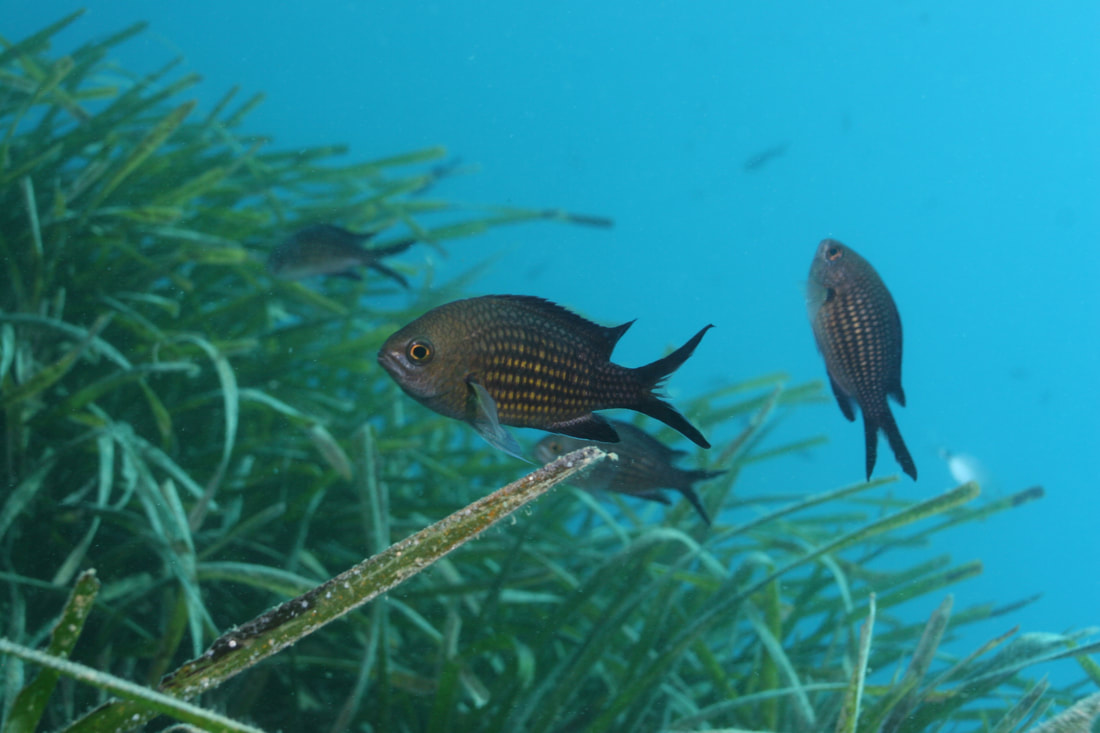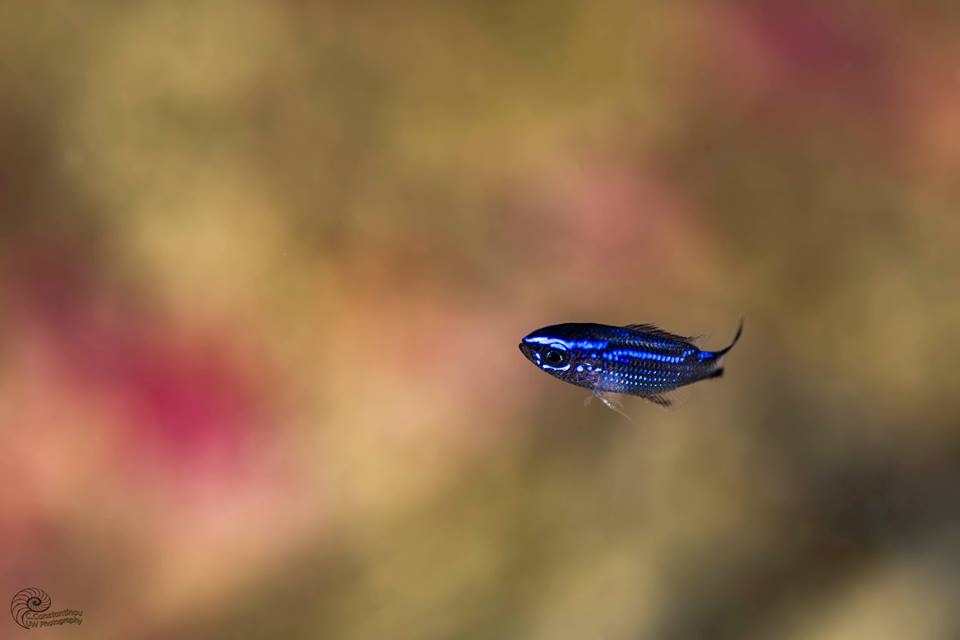The Damselfish (Chromis chromis) is the most abundant fish in the Mediterranean sea and so often gets overlooked as it is just so common around us while we dive. But believe it or not this grey adult fish (left image) starts out its life as a bright, you could say 'neon', blue, when they are babies and juveniles (right image)!
Adults are 5-10cm long and have the distinctive forked tail and school around the rocky reef or sea grass from the shallows to depths of up to 30m.
A really remarkable fish (see the fascinating youtube video below). Here in Malta the babies hatch in early to mid July and then we are surrounded by these beautiful, tiny blue fish!
Adults are 5-10cm long and have the distinctive forked tail and school around the rocky reef or sea grass from the shallows to depths of up to 30m.
A really remarkable fish (see the fascinating youtube video below). Here in Malta the babies hatch in early to mid July and then we are surrounded by these beautiful, tiny blue fish!
A very interesting video about Chromis chromis, filmed entirely while freediving:
| |
By David Watson, Owner, Founder & Head Instructor / AIDA Instructor Trainer at One Breath Freediving


